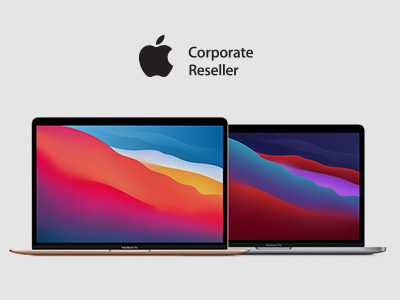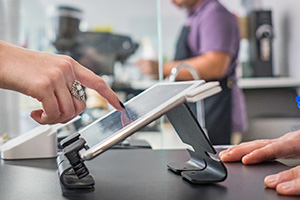The world of work is demanding – but there’s a Mac for any business
As organizations look to implement workplace modernization plans, figuring out the device flexibility question is a big part of the challenge. It’s...

Picture this: You enter a museum and your eye is drawn to a painting that looks interesting. As you wander closer, your smartphone alerts you with a message that includes the painting’s title, artist’s name, the date of its creation, and a short background history about the piece – and reminds you that a print is available for purchase at the museum’s gift shop.
When you consider all the potential benefits of beacon technology – interacting with visitors, customers, travelers, and employees in spaces like museums, stores, transit hubs, and offices to deliver highly contextual, hyper-local and meaningful messages – it’s time to take a closer look at beacons in your environment.
A beacon is a small, low-cost Bluetooth Low Energy (BLE) transmitter you can strategically place in locations throughout virtually any building. When someone equipped with a Bluetooth-enabled smartphone, wearable, or mobile device enters the area, a message can be sent to an app on the user’s smart device. Because the communication is proximity-based, messages can be delivered at-the-moment and provide of-the-moment value, like alerting customers and passersby to special offers and deals. Beacons also provide a behind-the-scenes benefit: they can collect real-time data, access customer data, and gather feedback for further analysis.
The retail and big-box world has been ahead of the pack in adopting beacon technology. Department store giant Macy’s embraced beacons during the 2014 holiday season as a means to enhance customer experiences in stores through personalized recommendations and deals. Now, many of the largest retail chains like are turning beacons on and using them to communicate with consumers in-store.
Beacon technology is not limited to retail however. Hospitals are using beacons to keep track of patients and equipment such as portable x-ray equipment moving around the facilities. Similarly, schools use them to track iPad carts across campus; restaurants send customized welcome messages to customers, along with a notification about a current menu special; stadiums are providing maps, merchandise offers, player stats, and seat upgrade offers. Transit systems, airports, museums, and event organizers have also taken note of beacon technology’s almost limitless applications.
By creating a relevant, location-based, tailored experience, beacons can do great things for your business: improving efficiency, analytics, and engagement, and increasing consumer loyalty. But the technology on its own cannot do this. It needs to be implemented with a strategy that suits your business and its physical environment.
Our Mobility Solutions team is here to help. Call on them to see how beacons can improve the customer experience for your organization, while keeping tabs on the people and equipment that drive it. A good first step would be a Zones mobility assessment, where we’ll inspect your existing mobility infrastructure and prepare you for the transition to beacon technology. Ask a Zones account executive to connect you with a mobility expert who can walk you through the process.

As organizations look to implement workplace modernization plans, figuring out the device flexibility question is a big part of the challenge. It’s...

Not long ago, the phrase “sustainable printing” might have caused people to scratch their heads in confusion. After all, many of us have seen a print...

In many industries, when companies look for ways to get a leg up on the competition, workplace modernization emerges as a key strategy. When you...